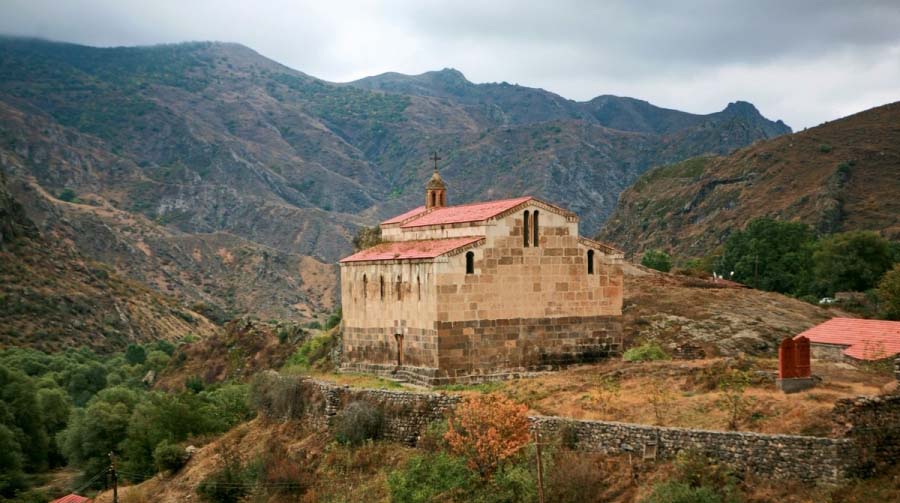7 Ways a Strong Kashatagh Benefits Artsakh and Armenia

What is Kashatagh?
Formerly known as Lachin, it is Artsakh’s largest region, the vital land-bridge that connects Artsakh to Armenia, making them effectively one. After 70 years of Azerbaijani rule, this historically Armenian province was liberated in the early nineties. Today, the region is being actively resettled and offers new life to Armenian families.
However, the years of foreign takeover, abandonment and war have left Kashatagh in ruins. Most of the region’s infrastructure has been uprooted, leaving many towns and villages with no access to work opportunities, healthcare, schools, water resources and other necessities.
With many houses destroyed or damaged during the war, the region also suffers from a widespread housing crisis. Many of the first resettlers still live in bombed-out wrecks. Entire families crammed in 1 or 2 small rooms, they routinely cope with makeshift roofs, earthen floors, and leaky walls and ceilings.
Throughout the past decade, the Tufenkian Foundation has responded to these challenges with targeted resettlement, reconstruction and development programs. To make Kashatagh a better place to live, we work to build houses, schools and clinics, cultivate lands and provide water systems. However, while the local population is the first to gain from efforts like these, changes occurring in Kashatagh can create an impact that ripples beyond the region: due to its strategic location, Kashatagh stands to guarantee the security and prosperity of both Artsakh and Armenia.
Here are the 7 ways a stronger Kashatagh can benefit us all.
1. By creating a stronger negotiating position: a developed and fully resettled Kashatagh will create facts on the ground that are hard to reverse. Restored infrastructure, newly built houses and thriving villages do more than create better conditions for people living in Kashatagh. They show that we are here to stay.
2. By substantially diminishing the length of the frontline: taking up much of Artsakh’s south-east, (more than 3,300 sq. kms) Kashatagh considerably shortens the border with Azerbaijan, making it more manageable and defensible.
3. By improving Artsakh’s defensive capabilities: in addition to cutting down the length of the frontline, the width of Kashatagh’s territory facilitates the creation of a layered defense system. This is an optimal setting for defense with a smaller army.
Throughout the past decade, the Tufenkian Foundation has responded to these challenges with targeted resettlement, reconstruction and development programs. To make Kashatagh a better place to live, we work to build houses, schools and clinics, cultivate lands and provide water systems. However, while the local population is the first to gain from efforts like these, changes occurring in Kashatagh can create an impact that ripples beyond the region: due to its strategic location, Kashatagh stands to guarantee the security and prosperity of both Artsakh and Armenia.
4. By providing improved protection for Southern Armenia: the existence of Kashatagh means a lengthier border with Iran (extended by 100 km). This, in turn, separates the front lines from Syunik, Armenia’s southernmost region, by an additional 100 km.
5. By ensuring greater integration between Artsakh and Armenia: today, there are 4 possible connecting roads between Armenia and Artsakh. Three of these are via Kashatagh. These roads are of paramount importance, for both commercial and security reasons.
6. By improving Artsakh’s agricultural self-sufficiency: Kashatagh is a territory rich in agricultural resources that can support the entire region, provide employment opportunities for the locals and create a strong foundation for Artsakh’s economic development.
7. By preserving the Armenian heritage of Artsakh: Kashatagh is rich in cultural, religious and historic monuments, such as ancient churches and monasteries, that attest to the Armenian heritage of Artsakh. Only by strengthening Kashatagh can we ensure that these important relics are maintained for the generations to come, thus upholding Artsakh’s Armenian legacy.
http://tufenkianfoundation.org


